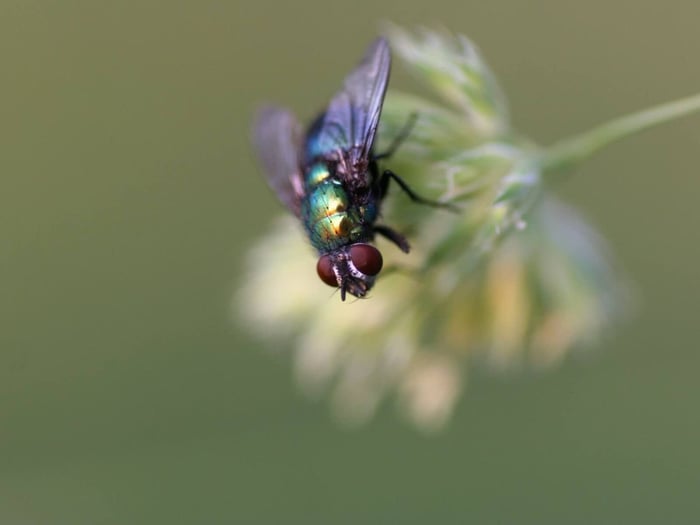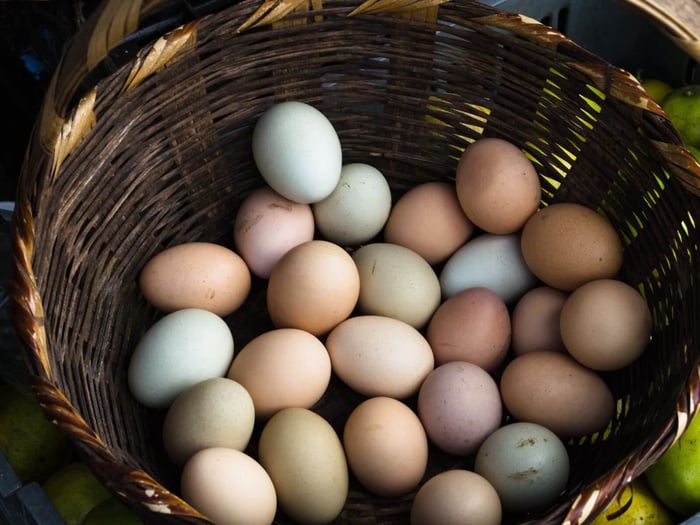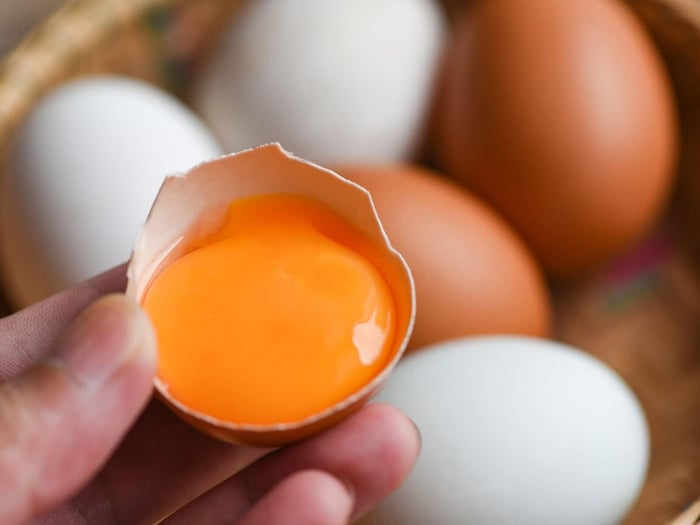Table of Contents
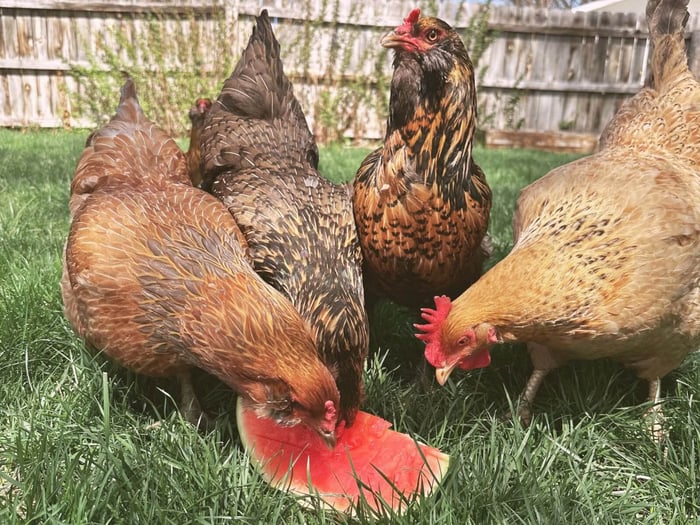 The Best (and Worst) Treats for Chickens: What’s Safe, What’s Not, and Why It Matters
The Best (and Worst) Treats for Chickens: What’s Safe, What’s Not, and Why It Matters
Whether you're tossing scraps from the kitchen or shopping for special snacks at the feed store, it's important to know what's good—and what's harmful—when it comes to treats for chickens. While feeding your flock a few extras can be a fun way to bond, not all treats are created equal. Some can boost nutrition and enrichment, while others can be toxic or throw off your flock’s balance.
In this guide, we’ll cover the top five best and worst treats for chickens, explain the "why" behind each one, and share tips for healthy treat-giving practices that keep your flock clucking contentedly.
The 5 Best Treats for Chickens
1. Scrambled Eggs
Yes, chickens can eat eggs—especially scrambled ones. Eggs are packed with protein and essential amino acids that support feather health, egg production, and overall vitality. Just make sure they’re cooked to avoid encouraging egg-eating behavior in the coop. Don't be afraid to add some of the egg shells into the mix, too!
Why it works: High-quality protein source that’s bioavailable and flock-approved.
2. Watermelon
Especially during warm months, watermelon is a hydrating, vitamin-rich treat that doubles as entertainment. Chickens love pecking through the juicy red flesh, and the high water content helps keep them cool.
Why it works: Hydration and enrichment wrapped into one, with natural sugars and vitamins A and C.
3. Insects (Dried or Live)
Insects are one of the most natural and nutrient-dense treats for chickens. In the wild, chickens spend a good portion of their day scratching for bugs—and it turns out, those instincts are right on target. Insects like mealworms, crickets, and black soldier fly larvae are excellent sources of protein, calcium, and essential fats that support egg production, feather regrowth, and overall health.
You can offer live insects if you’re comfortable catching or farming them, or go the easier route with dried options available online or at your local feed store. Many backyard chicken owners prefer dried mealworms or soldier fly larvae for convenience, shelf life, and easy portioning.
Why it works: Insects are high in digestible protein and calcium, support molting and strong eggshells, and promote natural foraging behavior—even when sprinkled on the ground like scratch.
4. Pumpkin (Raw or Cooked)
Pumpkin is more than just a seasonal favorite. It contains antioxidants, vitamin E, and a healthy dose of fiber. The seeds have been said to offer natural deworming properties, although scientific support is limited.
Why it works: Nutrient-dense, rich in fiber, and fun to peck at for enrichment.
5. Leafy Greens (Spinach, Kale, Lettuce)
Dark leafy greens are a low-calorie, nutrient-rich treat that supports yolk color and overall health. Just avoid iceberg lettuce, which offers little nutritional value.
Why it works: High in vitamin K, iron, and antioxidants without the risk of overfeeding.
‼️Reminder‼️
While these treats for chickens are all flock favorites with real health benefits, it's still important to practice moderation. Too many extras—especially those high in protein or sugar—can throw off your chickens’ balanced diet and lead to issues like soft eggshells or weight gain. Aim to keep treats at no more than 10% of their total food intake, and always prioritize a complete layer feed as the foundation of their nutrition. When given in the right amounts, these treats can enhance enrichment, boost health, and keep your flock excited to come running when they see you.
The 5 Worst Treats for Chickens
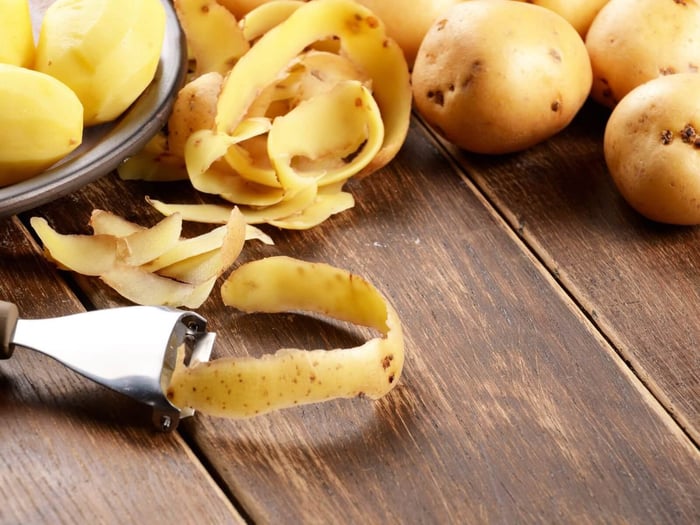
Avocados contain a toxin called persin, particularly concentrated in the skin and pit. Even small amounts can cause respiratory distress, heart issues, or death.
Why to avoid it: Persin is toxic to chickens and can lead to fatal outcomes.
2. Raw Potato Peels (Especially Green Ones)
Potatoes from the nightshade family contain solanine, a naturally occurring toxin that’s especially potent in green skins or sprouted areas. Cooking can reduce but not eliminate the risk.
Why to avoid it: Solanine causes neurological and digestive issues in poultry.
3. Chocolate or Candy
It should go without saying, but chocolate is toxic to many animals—including chickens. Theobromine and caffeine are the primary culprits, and even small amounts can be dangerous. Candy also introduces artificial dyes and sugars.
Why to avoid it: Contains toxins and zero nutritional value; leads to obesity and toxicity.
4. Moldy or Rotten Food
It’s tempting to toss old scraps into the coop, but moldy food can contain mycotoxins and bacteria that wreak havoc on a chicken’s digestive system. Some molds are fatal within hours.
Why to avoid it: Risk of food poisoning, neurological issues, or sudden death.
5. Raw or Dried Beans
Uncooked beans—especially kidney beans—contain a compound called phytohaemagglutinin, which is highly toxic. Cooking beans thoroughly (boiling for at least 30 minutes) neutralizes the toxin.
Why to avoid it: Uncooked beans are a common cause of sudden chicken deaths due to toxicity.
Treat-Giving Tips
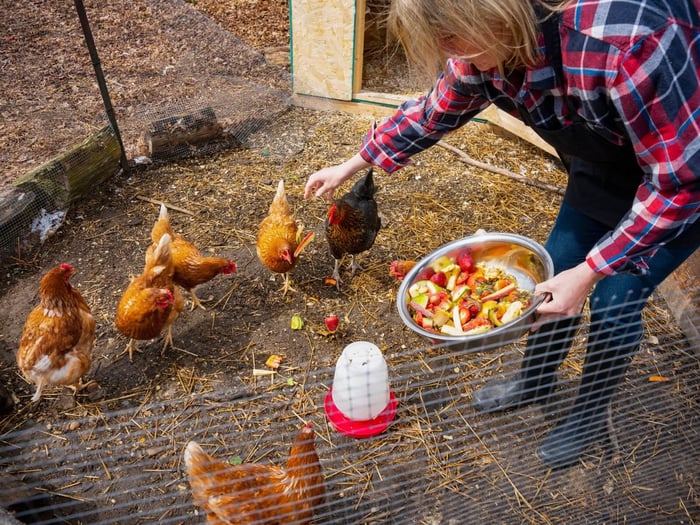
Follow the 90/10 rule: 90% of your chickens' diet should come from a complete feed, with only 10% from treats.
Feed treats in the afternoon: This ensures your chickens have already filled up on their balanced feed.
Offer variety, not volume: A mix of different safe treats promotes enrichment without overfeeding.
Keep the coop clean: Too many leftover treats can attract pests or spoil.
Watch your flock: If a chicken becomes lethargic or stops laying after trying a new treat, discontinue it immediately and consult a vet if needed.
Final Thoughts
Treats for chickens can be a joyful part of flock life—but only when you know what’s safe to offer. From protein-rich snacks like scrambled eggs and insects to hydrating treats like watermelon, there are plenty of ways to spoil your hens while still keeping their health a priority.
Just remember, chickens aren’t garbage disposals. Some human foods can seriously harm or kill your flock. Knowing the best and worst treats for chickens will help you raise a happy, healthy, and productive flock for years to come.
FAQs
Can chickens eat dairy products like cheese or yogurt?
In small amounts, yes. Some chickens enjoy yogurt or shredded cheese, but dairy can be difficult for them to digest and cause diarrhea. Stick to very small portions and use it sparingly.
Are mealworms safe for chickens?
Yes, dried or live mealworms are a protein-packed favorite, especially during molting. But they’re best given in moderation, as too many can cause an imbalance in protein-to-calcium ratios.
What fruit scraps are safe for chickens?
Apples (without seeds), berries, melons, bananas, and pears are all great options. Always remove pits and seeds from stone fruits like cherries or peaches, as they can contain cyanide compounds.
Can I feed my chickens leftover cooked food?
Some leftovers are fine, like plain rice, veggies, or cooked pasta. Avoid anything salty, sugary, or spiced. Never feed greasy or processed foods
Why do treats affect egg production?
Too many treats, especially those high in fat or sugar, can dilute the nutrition your chickens get from their feed. This can lead to soft-shelled eggs, lower production, or even health problems.


.png)
